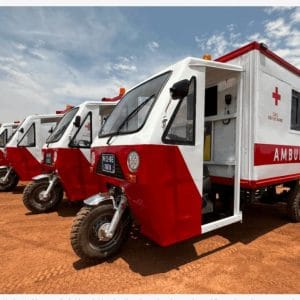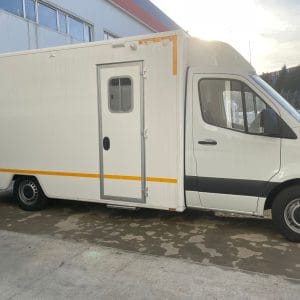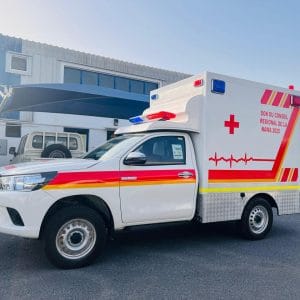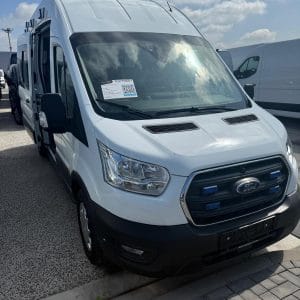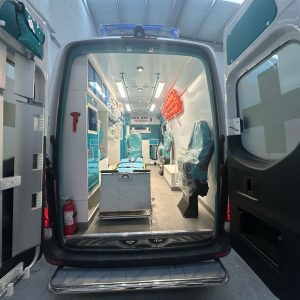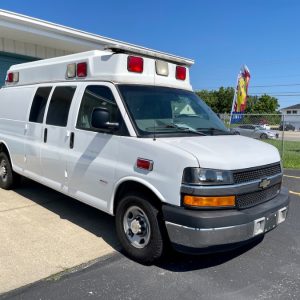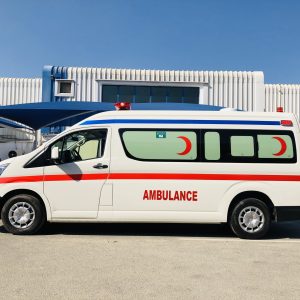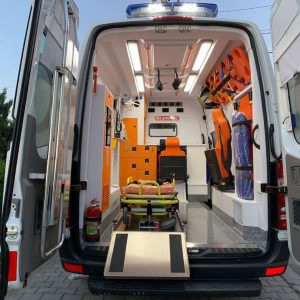4×4 Ambulance Specs; When lives are on the line and the call for help comes from remote clinics, rugged mountain passes, or disaster-stricken areas, a standard ambulance simply won’t cut it. This is where the unsung hero of emergency medical services (EMS) comes in: the 4×4 ambulance. Choosing the right one is a critical decision that impacts patient outcomes and crew safety.
This guide breaks down the essential 4×4 ambulance specs you need to consider, using a real-world example based on a Toyota Land Cruiser configuration for a demanding environment like the Mulitaka Health Care Centre in Enga Province.
Why 4×4 Ambulance Specs Are Non-Negotiable
Unlike their urban counterparts, a 4×4 ambulance is built for off-road capability, durability, and reliability in the toughest conditions. The right specifications ensure:
- Access: Reach patients in remote locations inaccessible to 2WD vehicles.
- Stability: Navigate muddy, rocky, or uneven terrain safely with a patient on board.
- Durability: Withstand the constant wear and tear of rough roads.
- Self-Sufficiency: Carry larger fuel tanks and essential equipment for long journeys.
Deconstructing the Critical 4×4 Ambulance Specs
1. The Base Vehicle: The Foundation of Reliability
The chassis is the most important starting point. For a true rugged 4×4 ambulance, a body-on-frame design is mandatory. The Toyota Land Cruiser 70 Series is the global gold standard for this application due to its legendary durability and simple, repairable mechanics.
- Engine: Look for a high-torque diesel engine. A V6 turbo diesel provides the necessary power (e.g., 4.2L) for climbing steep grades while fully loaded. Diesel fuel is also more readily available and safer in remote regions.
- Transmission: A manual transmission is often preferred for its robustness, greater driver control on slippery surfaces, and easier maintenance far from specialized auto shops.
- Drivetrain: A proper 4×4 system with high and low-range gearing is essential for tackling extreme inclines and treacherous terrain.
- Fuel Tank: A large fuel capacity (min. 90L) is crucial for extended range without refueling, a critical spec for remote area ambulances.
2. Safety & Control: Protecting the Crew and Patient
The vehicle must be equipped to handle emergencies before the crew even reaches the patient.
- ABS (Anti-lock Braking System): Prevents wheel lock-up, maintaining steering control during panic stops on paved or loose surfaces.
- Airbags: Driver and passenger airbags are a critical safety minimum.
- Power Steering: Reduces driver fatigue, especially important on long, demanding routes.
- Robust Lighting: A rotating or LED beacon light (red or green) and a high-decibel siren system are mandatory for alerting traffic in all conditions.
3. The Patient Compartment: A Mobile Clinic
This is where the ambulance’s purpose is realized. The interior 4×4 ambulance specs must focus on functionality, safety, and hygiene.
- Layout and Seating: A configuration with a primary stretcher, IV hooks, and a side-facing attendant bench seat for 2-3 personnel is standard for Basic Life Support (BLS).
- Partition: A half-opening partition wall with a window is vital. It protects the driver from projectiles during a sudden stop while allowing communication and visibility.
- Climate Control: A powerful air conditioner and heater are non-negotiable for patient comfort and preventing heat-related or cold-related illnesses in a confined space.
- Hygienic Surfaces: The flooring must be non-slip, waterproof, and chemical-resistant to allow for easy cleaning and disinfection after transporting a patient.
- Privacy: Frosted or tinted windows provide necessary patient privacy and help regulate the interior temperature.
4. Essential Medical Equipment
The vehicle must come equipped with the basics to stabilize a patient during transport.
- Stretcher: A primary stretcher with a 4-wheel locking system is the core of patient transport.
- Oxygen & Resuscitation: An oxygen inhaler/resuscitator unit is fundamental for respiratory emergencies.
- First Aid Kit: A comprehensive first aid kit with bandages, gauze, tape, and other essentials.
- Safety Equipment: A fire extinguisher is mandatory for any vehicle, especially one carrying oxygen.
5. Long-Term Value: Warranty and Support
Perhaps the most overlooked but critical spec is after-sales support. For a 4×4 ambulance operating in a remote province, local support is everything.
- Warranty: A comprehensive warranty (e.g., 36 months/100,000 km) covering both the base vehicle and the ambulance conversion is essential.
- Local Representation: The supplier must have a local service network for parts, panel beating, and mechanical support. Guaranteed availability of spare parts for 10+ years should be a deciding factor.
Conclusion: Specs That Save Lives
Selecting a 4×4 ambulance isn’t about finding a vehicle with the most features; it’s about identifying the right 4×4 ambulance specs that match your operational environment. It requires a rugged, reliable base vehicle like a Land Cruiser, outfitted with safety features, essential medical equipment, and built with materials that ensure durability and hygiene.
By prioritizing these critical specifications, healthcare providers and aid organizations can ensure they are investing in a vehicle that won’t just get them there—it will get them there safely, reliably, and ready to save a life.
Keywords Integrated: 4×4 Ambulance Specs, Land Cruiser Ambulance, Toyota Ambulance, Remote Area Ambulance, BLS Ambulance, Off-Road Ambulance, Ambulance Specifications, 4×4 Emergency Vehicle, Diesel Ambulance, Rugged Ambulance.



